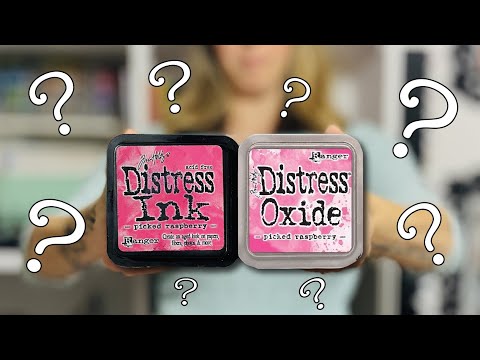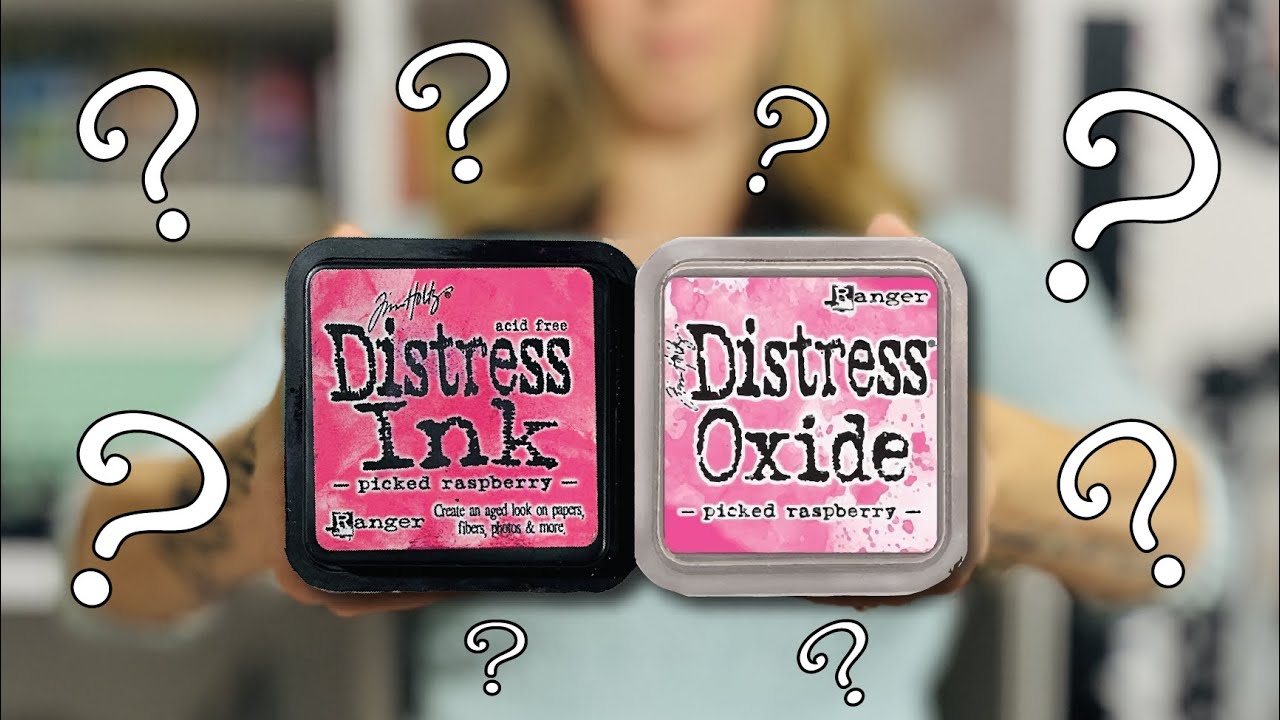Distress Ink and Distress Oxide are two popular types of ink that have become essential tools for crafters and artists. While both inks share similarities, it is their unique characteristics that set them apart and make them intriguing to explore. Distress Ink is a water-based dye ink that provides a soft, vintage look when applied. It blends effortlessly and reacts with water, creating beautiful watercolor effects on various surfaces. On the other hand, Distress Oxide is a hybrid ink that combines the properties of dye and pigment inks. This fascinating combination results in an ink that is both reactive with water and opaque, creating a chalky, oxidized effect when dry. The ability of Distress Oxide to layer and build color makes it an excellent choice for creating stunning backgrounds and adding depth to projects. Additionally, both inks are available in a wide range of vibrant colors, allowing for limitless creative possibilities. Whether you are a seasoned artist or a beginner, the distinctive qualities of Distress Ink and Distress Oxide will surely captivate your imagination and inspire your artistic endeavors.

Difference between Distress Ink and Distress Oxide
| Property | Distress Ink | Distress Oxide |
|---|---|---|
| Color Intensity | Highly pigmented, vibrant colors | Soft and muted colors |
| Opacity | Semi-transparent, allows for layering and blending | Opaque, covers underlying layers |
| Substrate | Best suited for porous surfaces like paper and cardstock | Works well on various surfaces including paper, fabric, and more |
| Reactivity | Reacts with water, creating unique effects like blending, lifting, and watercolor-like properties | Reacts with water and oxidizes, resulting in a chalky appearance and the ability to layer without muddying colors |
| Drying Time | Quick-drying, ideal for immediate crafting and stamping | Slower drying time, allowing for extended blending and manipulation |
| Longevity | Fades over time, especially when exposed to light and air | More resistant to fading, providing longer-lasting results |
Ink Showdown: Demystifying Distress Inks vs. Oxides for Crafters
Difference Between Distress Ink and Distress Oxide
When it comes to the world of crafting and art, there are countless mediums and materials to choose from. Among the most popular choices for adding color and texture to projects are distress ink and distress oxide. While they may sound similar, there are actually several key differences between the two. In this article, we will explore the distinctions between distress ink and distress oxide, helping you understand which one is the best fit for your creative endeavors.
Brief Overview
Distress ink is a water-based dye ink that was first introduced by Tim Holtz in 2001. It quickly gained popularity among crafters and artists due to its unique properties and vibrant colors. Distress ink is known for its ability to react with water, creating a soft and blended effect on various surfaces.
Distress oxide, on the other hand, is a relatively newer product that was introduced in 2017. It combines the properties of both dye ink and pigment ink, resulting in a hybrid ink that offers more versatility and unique effects. Distress oxide ink is known for its ability to react with both water and pigment, creating an oxidized and chalky appearance on different surfaces.
Composition and Properties
Distress ink is a water-based dye ink that contains a blend of water, glycerin, and dye colorants. It is known for its quick-drying nature and transparent finish. Distress ink is ideal for techniques such as blending, stamping, and watercoloring. It reacts with water, allowing crafters to create various effects like watercolor washes and ink blending.
Distress oxide ink, on the other hand, is a water-reactive and pigment ink fusion. It contains a blend of water, pigment colorants, and a unique reactive formula that creates an oxidized effect when exposed to water. Distress oxide ink has a longer drying time compared to distress ink, allowing crafters to manipulate the ink and create unique textures. It is also known for its opaque finish and ability to create vibrant layers on different surfaces.
Color Range
Both distress ink and distress oxide ink offer a wide range of colors, allowing artists and crafters to express their creativity. However, there are some differences in the color range between the two.
Distress ink is available in a vast array of colors, including vibrant hues, earth tones, and pastel shades. The colors in the distress ink range are often more intense and saturated, making them perfect for vibrant and bold projects.
Distress oxide ink, on the other hand, offers a unique color range that includes both bright and muted shades. The colors of distress oxide ink are often softer and more subtle, giving a vintage or aged appearance to projects. Additionally, distress oxide ink has a unique property where the colors can react with each other, creating a beautiful oxidized effect when layered.
Applications and Techniques
Distress ink is incredibly versatile and can be used in various applications and techniques. It is commonly used in cardmaking, scrapbooking, art journaling, and mixed media projects. Distress ink is perfect for techniques such as blending, stamping, stenciling, and embossing. It can be easily applied using ink blending tools, foam applicators, or directly from the ink pad.
Distress oxide ink offers even more versatility and unique effects in different applications. It is commonly used for techniques such as ink blending, watercoloring, stenciling, and creating backgrounds. Distress oxide ink can be applied using various tools, including ink blending tools, foam applicators, brushes, and even sprayed with water for a watercolor effect.
Conclusion
While both distress ink and distress oxide ink share some similarities, they also have distinct differences that make them suitable for different projects and techniques. Distress ink is known for its vibrant and transparent colors, perfect for blending and stamping. Distress oxide ink, on the other hand, offers a unique oxidized effect and is more versatile in terms of applications and techniques. Whether you prefer the boldness of distress ink or the vintage charm of distress oxide ink, both mediums provide endless possibilities for your creative endeavors.

